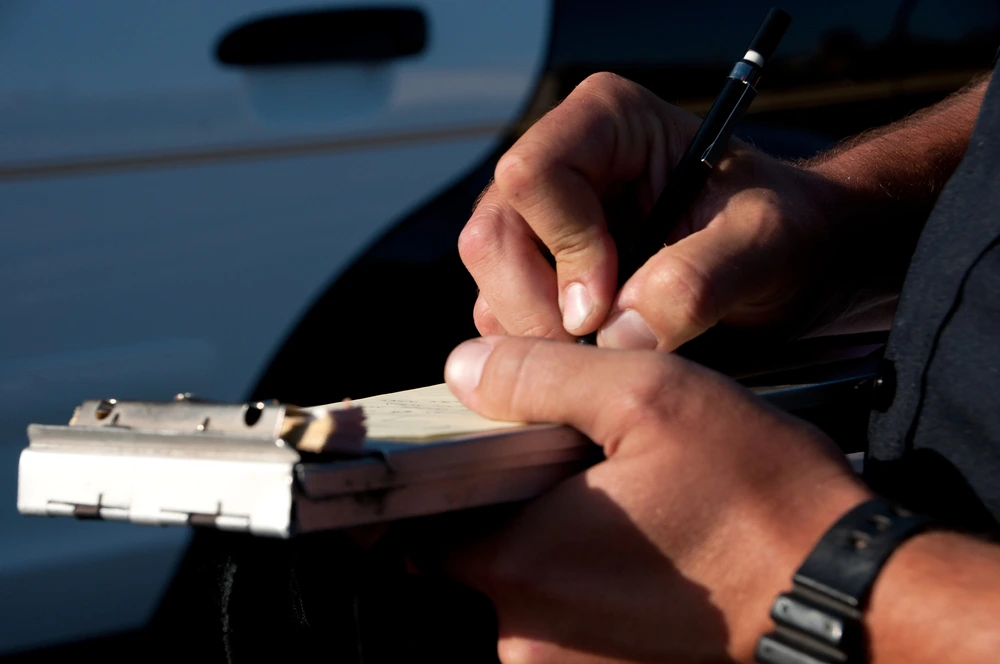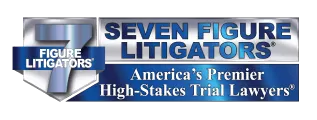If you’re bringing a personal injury claim after a car accident to recover your damages and losses, you can expect the other side to fight hard to minimize your claim if it all possible. Unfortunately, your previous traffic violations could affect your current accident lawsuit, primarily by making it easier to argue that you are partly to blame for the accident. That matters here in Casper, Wyoming, where personal injury cases are bound by something called “modify comparative fault” for determining damages. Your car accident attorney can tell you more about your specific case.
How Do Previous Traffic Violations Affect Your Current Car Accident Lawsuit?
Most of us don’t think about traffic violations as really “breaking the law.” For the average person, it’s more about the money required to pay for the ticket. But from the perspective of a court, having traffic violations on your record signals to them that you may have a habit of ignoring the rules of the road.
Now, a lot will depend on the specific factors of your situation. For example, if all of your traffic violations are parking tickets rather than speeding or running a stop sign, they will matter less. Likewise, if you had, for example, a lot of traffic violations from the past when you were a young adult, but now, 10 years on, you have no recent violations, this is a better situation than if you have recent tickets specifically for violating the rules of the road as you drive.
What Can Happen
If you have traffic violations, however, and depending on what they are, what could happen is that the court will be more sympathetic to the idea that you could have been at fault for the accident, or at least partly at fault. If you have a history of speeding, driving distracted, or even driving impaired, it’s more likely the court will believe an accusation that you were doing so at the time of the accident. This can make a big difference, even in situations where the other driver is clearly primarily at fault.
For example, say the other driver ran a red light and slammed into you at an intersection. Obviously, the other driver is primarily at fault and will be held so by the court. However, if you were texting at the time the accident happened, you may be held as much as 10% or even 20% at fault on the theory that if you had not been distracted, the accident would never have happened because you would have been able to take action to avoid it.
Why Degrees of Fault Are Such a Big Deal
Here in Wyoming, we have something called “modified comparative fault” in our personal injury system. This means that anyone less than 50% at fault for an accident is entitled to claim compensation for their losses and damages. However, their total settlement will be reduced by the same percentage as their fault. In the above example of distracted driving and running a red light, you would therefore only be able to recover 80% to 90% of your actual losses, and the insurance company covering the other driver would be able to reduce their payout by 10% to 20%. This gives them a lot of incentive to find a way to blame you as much as possible for the accident.
Sometimes, blame is obvious. If there is a traffic camera feed that shows clearly that you were either texting or not texting as you went through the intersection, that would be used to establish the degree of your fault in a lawsuit. But often, there isn’t such clear evidence. If there’s no evidence, and it’s just your word against that of the other driver, something that may come into play will be your traffic violation history.
If you’ve never been given a ticket before, then the other party is going to have a hard time trying to make out that you’re at fault if they don’t have any evidence. But if you’ve been given two or three tickets in the last five years for using your cell phone while driving, then the court is going to find it much easier to believe that that’s indeed what you were doing at the moment of the accident.
How Fault Is Determined
Proving fault in an accident requires proving that a person had a duty of care in the situation, that they violated this duty of care, and that this violation either caused the accident or contributed to it.
Duty of Care
All drivers have a duty of care towards other road users that requires them to follow all rules of the road, never drive while distracted or impaired, drive sensibly for the weather conditions, and keep their vehicle in good repair. This duty applies to everyone who chooses to get behind the wheel of a vehicle here in Wyoming.
Violation of the Duty of Care
The most common way that drivers violate the duty of care is by breaking traffic laws, such as by running a red light, turning without indicating, using a cell phone while driving, or speeding. But you can also violate the duty of care in other ways.
For example, the regular speed limit on a road might be 40 mph, but when it’s raining heavily or is foggy, drivers are expected to moderate their driving to match these more dangerous weather conditions. At that point, it could be possible to say that a driver has violated the duty of care for going 40 mph on that road, even though 40 mph is the speed limit. If 40 mph too quick given the weather conditions, that would be a violation of the duty of care.
Causation
Finally, just because the driver did violate their duty of care does not necessarily mean that they are at fault in an accident. It must be shown that there’s a direct link between their actions and the accident. In other words, “but for” those driver’s actions (or inaction), the accident would not have taken place.
Going back to the example from above, the driver who ran the red light is obviously primarily at fault because “but for” their action in running the red light, the accident would never have happened in the first place. However, if you were texting, it could also be argued that “but for” your actions, the accident would not have happened. However, the line of causation between your distracted driving and the accident is less clear and sharp than with the other driver who ran the red light, which is why you would be assigned a much lower degree of fault.
Get the Help of an Experienced Car Accident Attorney in Casper, Wyoming
The best way to protect your interests after an accident is to work with a car accident lawyer who has experience here in Wyoming with our laws and our courts. An attorney with car accident experience knows how to prove fault, defend you against inappropriate accusations of fault, and argue persuasively both in settlement negotiations and in the courtroom for what you are really owed.
If you’ve been in an accident, don’t hesitate. Reach out to the Ochs Law Firm for a free consultation in Casper, Cheyenne, Jackson, Laramie, Cody, Gillette, or Idaho Falls ID.







